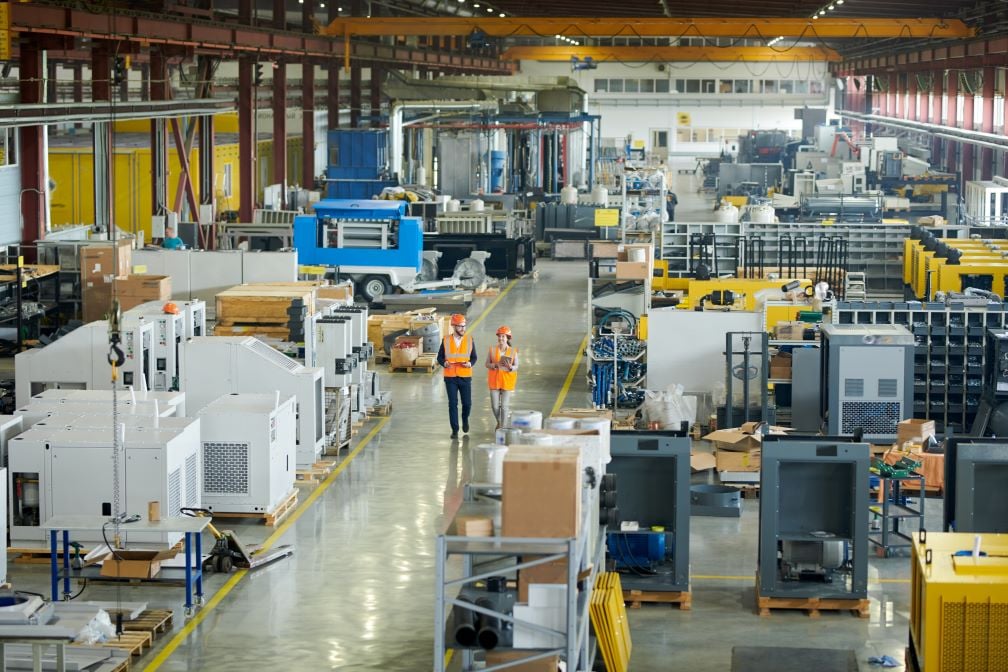The Resurgence of U.S. Manufacturing: A New Era of Onshoring
In recent years, there has been a significant shift in the manufacturing landscape of the United States. The trend of offshoring, which began in the late 1970s and saw over 60,000 manufacturing plants and factories move to countries with lower costs, is reversing. Onshoring (also known as reshoring), particularly in the United States, has grown in popularity over the last few years.
The COVID-19 pandemic played a pivotal role in exposing the risks of our over-dependence on foreign supply chains from an economic and national security perspective. This realization has spurred a movement towards deglobalization and localization, particularly in strategic sectors such as microchips, automobiles, defense, energy, and agriculture.
Onshoring benefits the United States in many ways, including an increase in manufacturing jobs. Many large manufacturing companies rely on contract labor regularly or during turnover season. Keeping track of workers and ensuring contract obligations are met is a challenge that impacts scheduling, safety, and a company's ability to get more work done with their existing budgets.
Detailed information on these areas is also a requirement for eligibility for some tax credits and incentives, such as the Inflation Reduction Act (IRA) 48C(e) tax credit. Contractor data and spend management software can help manufacturers gather the information needed to satisfy government requirements.
Tapping into Government Incentives and Capital Investment
Although the pandemic was pivotal in creating a climate for manufacturing companies to onshore, other components were needed to fall into place.
Over the last few years, three significant pieces of legislation have become law:
- The Infrastructure Investment and Jobs Act (IIJA)
- The Creating Helpful Incentives to Produce Semiconductors (CHIPS) and Science Act.
- The Inflation Reduction Act (IRA).
Among other things, these legislative acts have spurred U.S. businesses to increase investment in domestic manufacturing. Specifically, industries related to semiconductors, clean energy, and electric vehicles have been targeted.
The legislation also includes tax benefits to incentivize private industry to bring manufacturing back to American soil. This led to more than $800 billion in capital investment, a figure that continues to grow. Remarkably, factory construction in the U.S. has nearly doubled within a year, with many projects employing contractors for completion.
Let’s dig into some of the highlights.
Clean Energy Investments:
Since August 2022, domestic utility-scale clean energy investments have reached $383 billion. In the first year of the IRA, 280 clean energy projects across 44 states were announced, representing $282 billion of investment. Additionally, $27 billion was earmarked for constructing or expanding 83 manufacturing facilities nationwide.
Focus on Renewable Energy:
Investments are primarily in renewable energy, with significant projects in solar power, energy storage, onshore and offshore wind. These projects total 83 new ventures, with a combined investment of $26.8 billion, and are expected to create 23,408 new jobs.
LNG and Oil & Gas Projects:
North American LNG projects have seen announcements worth $117 billion. The U.S. remains a dominant player in the global liquefaction capacity. In the oil and gas sector, 2023 has seen $110 billion in investments, focusing on bio-diesel, carbon capture, and plant expansions.
Despite the last large refinery being built in 1977, nine plant expansions are planned. The U.S. has approved $76 billion in grants, with Texas, Arizona, New York, Ohio, Idaho, Nevada, and North Carolina being key states.
Automotive and Microchip Industries:
The electric vehicle (EV) sector is booming, with around 30 factories planned, under construction, or operational, and nearly $100 billion invested in domestic cell and module manufacturing. The microchip industry is also experiencing a renaissance, with 35 companies announcing $200 billion in production investments and 23 new chip plants in the U.S.
Data Center Expansion:
The number of U.S. data centers is projected to increase by 50% by 2026, with Virginia and Texas leading in construction investments. In 2023, North American data center construction grew by 25%, with Dallas experiencing a 327% increase.
Microsoft and AWS are aggressively expanding their infrastructure to meet the growing demand for cloud services and Artificial Intelligence (AI). Microsoft is on track to build between 50-100 new data centers each year. Amazon plans to invest nearly $150 billion over the next 15 years in data centers.
Attracting and Retaining a Quality Workforce
The amount of money invested and the pace of construction due to the legislation is almost dizzying. And the pace of facility construction has continued to be robust. A Dodge Report noted a 26% increase in manufacturing starts in January 2024 after a 75% increase at the close of 2023.
Sustaining the pace of development and meeting the investment goals – boosting the economy and strengthening the U.S. supply chain – are admirable goals but recognizing them will not be simple.
One of the primary challenges impacting the manufacturing boom is available labor. According to research from Deloitte, close to one-third of the manufacturing workforce in 2022 was over 55. The same report noted a survey of manufacturing executives by the National Association of Manufacturers. The survey found that nearly 75% of respondents stated their greatest business challenge was attracting and retaining a quality workforce.
Although the research noted manufacturers, “have made progress in adapting their workforce policies to improve talent attraction and retention ...”, the industry continues to face a significant labor gap. A separate analysis by Deloitte and the Manufacturing Institute found by 2030, the industry will need to fill four million jobs. They warn more than half of the jobs could go unfilled unless more people enter the industry.
Leaning into Contractor Data Management Software
Many have suggested ways to grow the manufacturing workforce and meet the increased demands. Among the suggestions are increased reliance on robotics, greater focus on employee retention, and upskilling the current workforce.
It is likely that no one solution will enable the manufacturing industry to meet its massive labor needs. An all-in policy that focuses on multiple strategies can help the industry fulfill the great opportunities that onshoring has brought.
Many large manufacturing companies use contract labor regularly or during specific times of the year. With the sector booming, the need to fill gaps via contract labor is likely to grow in the short term and the future.
While contract labor can help companies grow and take advantage of the opportunities that have arisen due to the legislation, tracking outside labor can be challenging. However, robust technology empowers companies with a far more efficient way to track the costs of labor, equipment, and materials.
Data management and spend software gives manufacturers insights into labor performance and simplifies managing contract labor. The data also empowers manufacturers to make key decisions with confidence. Finally, claiming some tax incentives and credits requires receipt or proof of information that can be tracked through contractor data management software.
 Making the Most of Onshoring Gains
Making the Most of Onshoring Gains
The resurgence of U.S. manufacturing through onshoring is a testament to the country's adaptability and foresight. This shift addresses supply chain vulnerabilities and positions the U.S. as a leader in the next generation of manufacturing, particularly in clean energy and technology. With substantial investments and government support, the future of U.S. manufacturing looks bright, promising economic growth and job creation across various sectors.
Contract labor is primed to play an outsized role in the manufacturing boom. Managing contract labor, materials, and equipment spend with data management software will help manufacturing companies maximize the gains that come with onshoring.
The myTrack Platform can simplify the management of contract labor so manufacturers can get the most out of their staff to make up for shortages and knowledge gaps. The platform provides a far more efficient way to track the costs of labor, equipment, and materials.
Take the next step. Find out how to minimize the cost of contract labor and increase its efficiency with the myTrack Platform.


